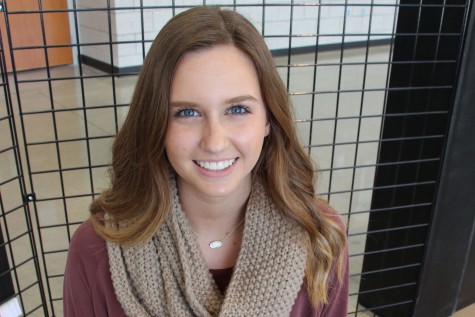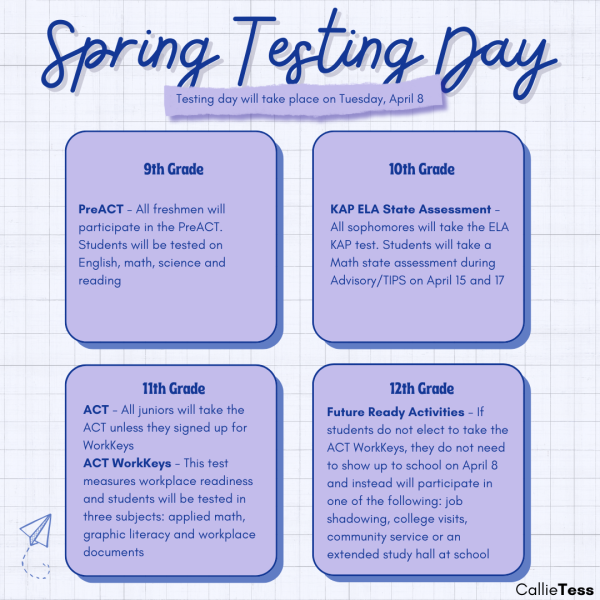Substance abuse policy called into question
Implemented last school year, a district-wide substance abuse policy was established to ensure equal consequences for students who violated it. The new policy was revised in the beginning of the 2014-15 school year to meet the needs of the district and ensure fairness. The drug and alcohol policy for all the Blue Valley schools is now uniform 365 days a year.
“Two years ago, the policy stated that only infractions at school events could be punished,” baseball head coach Rick Sabath said. “As coaches and teachers, we didn’t feel like that really sent the right message because there were too many loopholes. We, as a district, didn’t think that was the right way to go about it. So, based on the other schools, we wanted to have uniformity. Blue Valley Northwest and Blue Valley North had separate policies than Blue Valley High, Blue Valley West and Blue Valley Southwest. Theoretically, an athlete at Northwest or North could get in trouble at their school, but the Southwest kids may not have been punished at all.”
Beginning this school year, the drug and alcohol policy was applied to not only athletics in the district, but activities as well. In order to participate, students must agree to this policy without exception.
“I think the policy is a good thing,” Wolfbyte and Wolf Pack Crew sponsor Steven Cortez said. “If kids are going to be a part of and represent our school, which the kids do in Wolfbyte and Wolf Pack Crew, they should be held accountable. If you’re in sports and get kicked out for 50 percent of the season, and you’re in an activity and don’t get punished, I don’t think that’s fair either. I think it’s important to be [fair] across the board for all activities.”
Although the policy has been implemented to keep students accountable for their actions, there seems to be some gray area during the times where the policy has had to be enforced.
“I believe that the way the policy is written leaves too much wiggle room and gray area where favoritism could potentially play a part [in the punishment],” cheerleading head coach Taylor Holmes said. “It is not zero tolerance, and it should be. There is too much gray area and it should be black and white. You get caught — you are removed from the program. That’s how it works in college sports, and if we are training our kids to go to college and participate in sports or activities, we should be implementing a zero-tolerance policy.”
For a first offense, the policy states that consequences could extend to as much as 50 percent of the season. In order to determine the severity of the offense, both the administration and the coach or sponsor meet to sort through the case. They also meet with other administrators to make sure they are remaining fair district wide. For the first offense, the phrase, “Suspension from participation in activities for not more than 50 percent of one full season,” leaves leeway in choosing the punishment, which is why it’s being seen as a gray area due to the fact that the consequences could go from zero to fifty percent of a season.
“I still want them to be part of the team on a first offense level,” athletic director Gary Howard said. “If it happens again, then they could potentially be removed from the program. That’s when they didn’t learn their lesson the first time. I try to be as fair as possible about it. My policy is: kids are always going to make mistakes, and it’s my belief that they need to stay with a good support group. If you take them out of that support group, then we’re saying to them, ‘You don’t matter.’ Well, they all matter to me.”
Since the coach or sponsor has a say in punishing the student who has been caught with drugs or alcohol, there could be the potential for favoritism to shine through. An example of this could be a coach or sponsor favoring more valuable players or assets to the team and decreasing the punishment. Cortez said this is a common misconception.
“When you are trying to be flexible with the students, in other words trying to take into account what happened, the student’s perception of that flexibility will be skewed in their minds to favoritism,” Cortez said. “We’re trying our best to help kids learn. At the second or third offense, they obviously haven’t learned and they should be done. But if it’s the first offense, we’re trying to help them learn from their mistakes because that’s what teaching is all about. I’m hoping there’s some flexibility on everyone’s part in realizing that we aren’t trying to play favoritism — we’re trying our best to help the student.”
The policy allows students to have a second chance if a mistake is made, which is something that is special to the Blue Valley district.
“I think this policy is fair — we all make mistakes,” Howard said. “This is a time where a lot of kids experiment. To me, it’s not about punishing the kid. It’s about keeping kids safe, and it scares me to death if I hear about kids that are out partying. You never know how much they drank, what kind of drugs they did and how that affects their body — especially someone who has never done it before. So for me, it’s a safety issue.”
Posting or being in photos that have drugs or alcohol in them can lead to the same consequences as being in legal trouble. This is another area of concern since the margin among offenses can be large and can lead to questions on how to implement the policy. Senior Patrick Cairns said he was suspended from participating in two football games due to the administration finding a photo of him pictured with alcohol.
“I wasn’t happy with my punishment,” Cairns said. “There’s nothing really in the policy that deals specifically with pictures, so I still think I deserved some kind of punishment, but I think there should have been something in the policy that pointed my case out in specific and had a set procedure. There’s a ton of gray area in this policy, and there’s a lot of things that could happen that people couldn’t get in trouble for and things that aren’t specified that people could get in trouble for just because it’s not mentioned in the policy.”
Although there is potential for gray area in the policy, Howard said the basic principle comes down to keeping students safe. Using this policy as not only a guide to make decisions to not use drugs or alcohol, but also keeping in mind that the choices that are made in high school can affect a student throughout his or her entire life.
“We don’t try to punish students; they have to learn this,” Howard said. “It’s not me punishing somebody — it’s something that they did. If they wouldn’t have done that or been at a certain place, we wouldn’t need to have a conversation. A lot of people are disappointed about the policy, but sometimes they’re disappointed that they got caught. Everybody should know this policy because they signed it. If it keeps kids safe, I’m all for it.”








